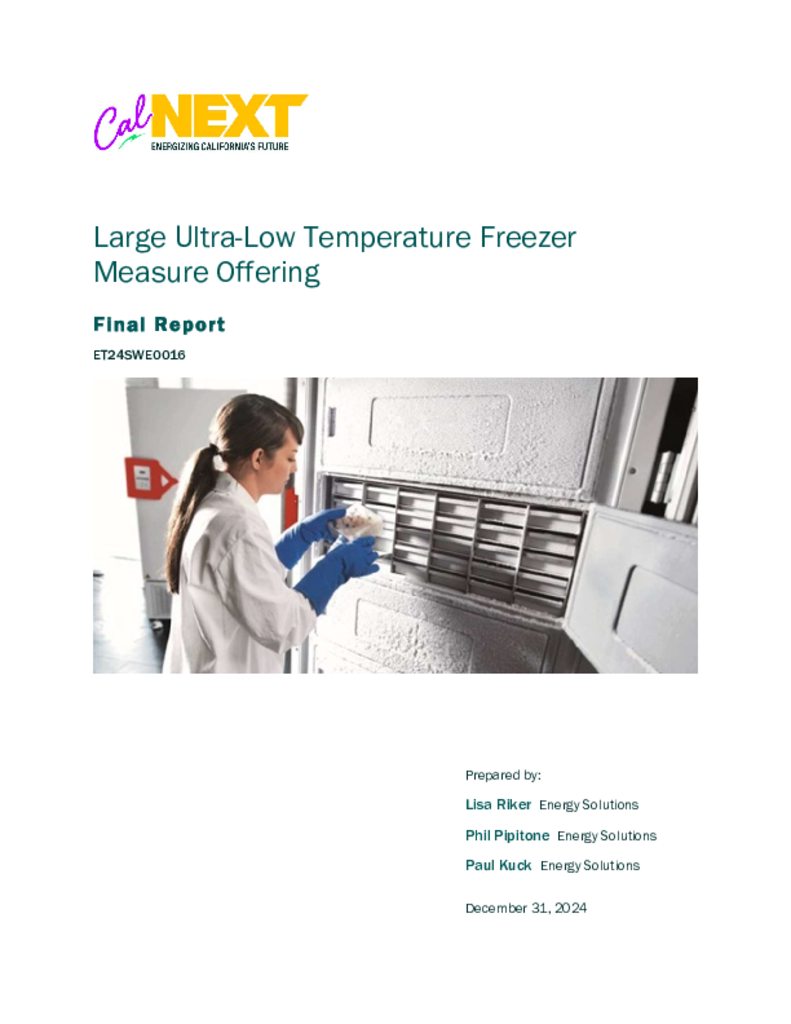ET24SWE0016 - Large Ultra-Low Temperature Freezer Measure Offering
Laboratory cold storage solutions such as freezers, refrigerators, and cryogenic storage tanks are critical to keeping valuable reagents and priceless samples safe. Ultra-Low Temperature Freezers (ULTs) are designed for laboratory applications that maintain set point storage temperatures between -70 °C and -80 °C (-94 °F and -112 °F). Ranging in size between 3 to 35 cubic feet, ULTs are essential equipment commonly found in biotechnology, pharmaceutical, university, government, and healthcare research laboratories. Once stocked with samples, they are rarely shut off, running 24 hours a day, 365 days a year. While the COVID pandemic increased the visibility of ENERGY STAR-certified ULTs as an energy-saving measure, ever-present research needs, and growing biotech manufacturing and biobanking industries, continue to expand the market. Advanced compressor technology, better insulation, use of hydrocarbon (HC) refrigerants and thoughtful design have allowed larger size, higher capacity units to occupy the same footprint as smaller size models, thus increasing demand for units 29 ft3 and up.
This project aims to add a measure offering within the existing CA eTRM Measure Package (MP) SWCR017 Ultra-Low Temperature Freezer, to cover units larger than 29 ft3 (Existing MP includes 15–23.9 ft3 and 24–29 ft3) by performing a baseline monitoring analysis for standard efficiency units in this size category. The project will also review incremental measure cost of the existing measure offerings and add new building types to the list of applicable building types for the measure including “Government Facilities” and “Education – Community College” for all sizes of ULTs. The existing HVAC interactivity methodology will be reviewed as well, with any recommendations for improvement being provided to the measure package Lead IOU.
The Large Ultra-Low Temperature Freezer Measure Offering project will update the existing eTRM Measure Package SWCR017. It will align the measure offering size categories with the new ENERGY STAR® Laboratory Grade Refrigerators and Freezers Specification V2.0 by removing the upper and lower limits of the existing 15-29 ft³ size categories and modifying the HVAC interactivity methodology. This will align the measure with current market purchasing trends and help reach the state’s energy efficiency goals by expanding the model offerings to energy efficiency programs. The project included capturing baseline energy consumption data, a market assessment, updating the eligible building types and incremental measure cost updates for the measure package.


